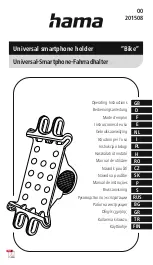
RM3000-f & RM2000-f Sensor Suite User Manual
– August 2012
Page 5 of 42
2 Introduction
Thank you for purchasing PNI Sensor Corporation’s RM2000-f or RM3000-f Geomagnetic
Sensor Suite (pn 90042-f and pn 90043-f, respectively). The RM2000-f is comprised of two
Sen-XY-f geomagnetic sensors (pn 13060) and a 3D MagIC ASIC MLF controller (pn 12927),
and this forms the basis for a 2-axis (horizontal) digital compass. The RM3000-f is the same as
the RM2000-f but adds a Sen-Z-f geomagnetic sensor (pn 13070 or pn 13101), such that
compassing measurements are not constricted to the horizontal plane. Note there are two
versions of the Sen-Z-f sensor: the 13070 which has the same package as PNI’s legacy Sen-Z
sensor, and the 13101 which is larger but provides for more robust mounting to the user’s PCB.
When implementing an RM3000-f or RM2000-f Geomagnetic Sensor Suite, each geomagnetic
sensor serves as the inductive element in a simple LR relaxation oscillation circuit, with the
sensor’s effective inductance proportional to the magnetic field parallel to the sensor axis. The
LR circuit is driven by the 3D MagIC ASIC. Since the LR circuit’s oscillation frequency varies
with the strength of the magnetic field parallel to the sensor, the 3D MagIC’s internal clock is
used to measure the circuit’s oscillation frequency (cycle counts) and hence the magnetic field.
The 3D MagIC also contains an interface circuitry to communicate with a host microprocessor
on an SPI bus. The 3D MagIC can control and measure up to three PNI geomagnetic sensors,
with each sensor individually selected for measurement and individually configured for
measurement gain (resolution).
Since the Geomagnetic Sensor Suite works in the frequency domain, resolution and noise are
established cleanly by the number of cycle counts. In comparison, fluxgate and MR technologies
require expensive and complex signal processing to obtain similar resolution and noise, and in
many respects the Geomagnetic Sensor Suite’s performance simply cannot be matched. Also,
the output from the 3D MagIC is inherently digital and can be fed directly into a microprocessor,
eliminating the need for signal conditioning or an analog/digital interface between the sensor and
a microprocessor. The simplicity of the Geomagnetic Sensor Suite combined with the lack of
signal conditioning makes it easier and less expensive to implement than alternative fluxgate or
magneto-resistive (MR) technologies.
For more information on PNI’s magneto-inductive sensor technology, see PNI’s whitepaper
“Magneto-Inductive Technology Overview” at
http://www.pnicorp.com/technology/papers
.






































